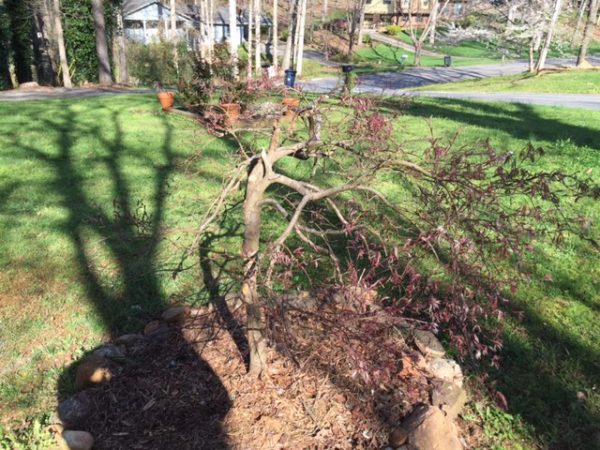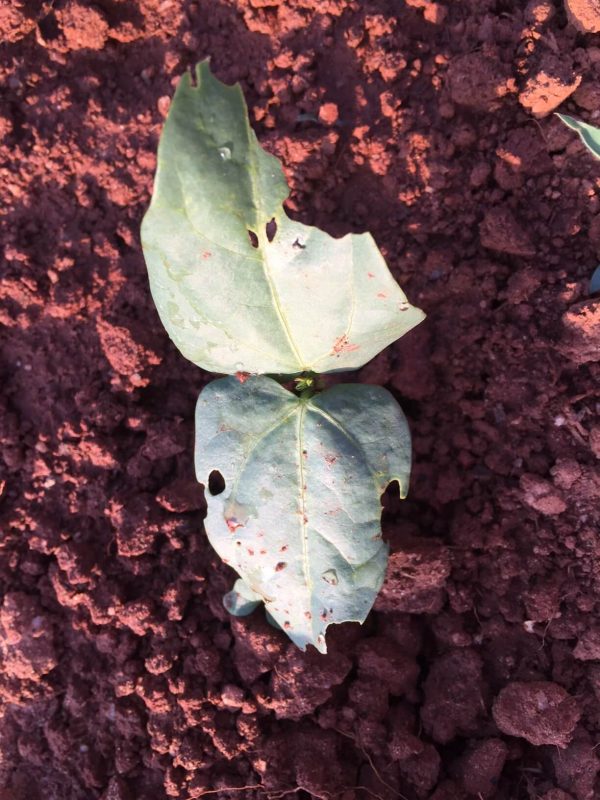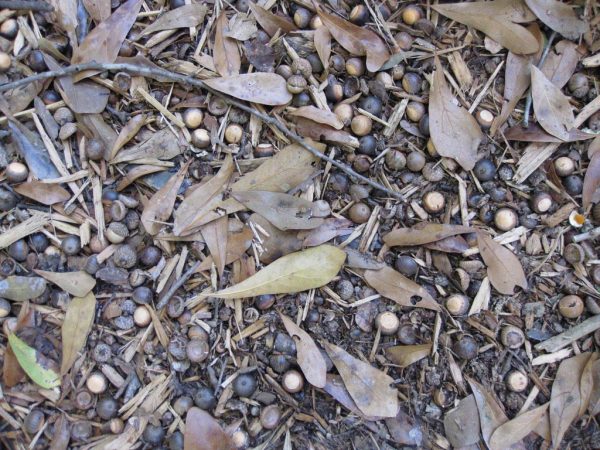Squash

Cucurbita pepo, Cucurbita moschata, Cucurbita maxima, Cucurbita mixta
Squashes are warm-season vine crops with flavorful flesh. The many types are divided into summer squash, grown for the immature fruit, and winter squash, which is harvested mature.
• More detailed information can be found in The Georgia Fruit & Vegetable Book by Walter Reeves and Felder Rushing
• For more information on squash explore any or all of the following sites:
Gardening in Containers gives good tips on using containers to grow plants
Growing Vegetables Organically
Squash can take a lot of room, so be prepared. Vining types will spread 10 feet or more, but can be grown on trellises with adequate support for the heavy fruits. In recent years, bush types have been developed that take much less space and can even be grown in pots.
WHEN TO PLANT
Don’t hurry to get squash into the garden very early. The plants need warm weather to develop and may rot off if weather is cool and wet. Sow seeds indoors under lights about 1 week before the frost-free date (average date of last frost). Set out started plants or sow seeds directly in the garden after any danger of frost has passed.
WHERE TO PLANT
To have the best harvest, plant squashes in well-drained soil in an area with full sun (8 to 10 hours will suffice), although they will grow and produce in light shade (some gardeners grow squash between rows of corn). Grow bush types in raised beds or containers.
HOW TO PLANT
Apply a complete garden fertilizer, such as 10-10-10, at a rate of 1 1/2 pounds per 100 square feet of garden. Spade or rototill the soil. (See “Soil Preparation” in the vegetable garden introduction.) Because vine crops do not tolerate root injuries common to transplanting, indoors under lights sow squash seeds in peat pots that can be planted without disturbing the tiny roots. After danger of frost has passed, sow 6 seeds or set 2 or 3 transplant seedlings in hills about 5 feet apart, with rows 10 feet apart. Or space the plants 10 feet apart down the middles of beds. Set the plants at the same depth they were growing. Thin the seedlings to 2 or 3 per hill when they are big enough to handle. If there is danger of disturbing the other seedlings, pinch off the extras instead of pulling them. Bush types are well suited for beds, spaced 3 feet apart down the middles of the beds. Dwarf bush types flourish in 5-gallon buckets, half barrels, or similar-sized containers, but you must make sure they drain. Sow or plant dwarf bush types, 1 per container, in a commercial potting mix.
CARE AND MAINTENANCE
Squashes require lots of water and fertilizer after they set fruit. Apply 1 inch of water per week if nature does not cooperate. Fertilize with nitrogen when the vines have almost covered the ground, but be sure to rinse the fertilizer off the leaves. Squash has both male and female flowers on the same plant. Usually, male flowers are produced first. Many gardeners are dismayed when these flowers fall off without making any squashes. Female flowers have tiny squashes just below the petals; male flowers have straight stems. Bees play an important role in pollination by carrying the pollen from the male flowers to the female flowers as they feed. Use insecticides carefully in the evening-sometime after the sun sets but before it is too dark to see-to avoid harming the bees. Pay even closer attention to plants in containers than plants in the garden. Water them as often as necessary to prevent wilting, and apply a complete liquid fertilizer every week or so, according to directions on the package. All squashes are susceptible to attack by squash vine borers. These larvae of red beelike moths lay eggs on the bases of the plants, and the eggs hatch into grubs that burrow into the vines, turning them to frass (a mass of shredded plant parts and often insect parts) and eventually killing them. Control these insects by applying an approved garden insecticide to the stems of the plants when the plants begin to vine and then every 2 weeks during the season. Stems that have been invaded may be saved by slitting them lengthwise where the damage is evident to kill the grubs inside, then burying the damaged stem so it can form new roots. Control cucumber beetles with a garden insecticide, and squash bugs with sabidilla dust. Squash bugs will damage the fruits of winter squash so they rot in storage. (See the pest control chart in the introduction to the vegetable garden.)
ADDITIONAL INFORMATION
Harvest summer squashes while they are still immature, at the proper size for the type. Pick elongated types when they are 6 to 8 inches long and less than 2 inches in diameter. Pick patty pan (scalloped) types when they reach about 4 inches in diameter. Plan to harvest every day when the plants are producing heavily to stimulate continued production and to make sure fruits are not allowed to become overly large. Some people like larger, straight types, which they hollow out and fill with stuffings, or which they grind for baking in breads. Harvest winter squashes when they have developed full color and when the rinds are hardened sufficiently that you cannot cut into them with your fingernail. Cut the handles 3 to 4 inches long using a pair of shears to avoid breaking them. Winter squashes without handles do not keep well. Wear gloves during the harvest because the stems may have sharp spines on them. Keep the winter squashes in a warm place after harvest to harden them off, then store them in a dry place at 50 to 60 degrees Fahrenheit. Well-grown winter squashes can be stored all winter.
VARIETIES
Just a few varieties are listed here. There are many more, and new ones are developed each year. Check seed catalogs for additional kinds. Summer squash matures in 50 to 60 days, and winter squash matures in 80 to 120 days.
Varieties
Comments
Summer Squash:
Golden Zucchini:
Gold Rush
Deep gold, superior fruit. AAS.
Green Zucchini:
Aristocrat
Productive. AAS.
Black Zucchini
Best known and most common summer squash.
Chefini
Excellent quality, productive. AAS.
Spineless Beauty
No spines on stem.
Scallop (Patty Pan shaped):
Peter Pan
Light green. AAS.
Scallopini
Productive. Good fresh or cooked. AAS.
Sunburst
Yellow.
White Bush Scallop
Traditional scalloped type.
Yellow Crookneck:
Early Yellow Summer Crookneck
Familiar warty fruit.
Sundance
Smooth skin.
Yellow Straightneck:
Early Prolific Straightneck
The standard, light cream color.
Goldbar
Golden yellow.
Winter Squash:
Acorn:
Cream of the Crop
White acorn type. AAS.
Table Ace
Dark green, low fiber,
Table Gold
Bush.
Table King
Bush.
Table Queen
Standard, dark-green acorn.
Buttercup:
Buttercup
Fine-grained, sweet 3 pounds.
Emerald Bush Buttercup
Bush.
Sweet Mama
Semivining, sweet, 3 to 4 pounds. AAS.
Butternut:
Butterbush
Bush.
Butternut Supreme
Early, sweet.
Early Butternut
Flavorful and early. AAS.
Waltham
Uniform, 12-inch fruits.
Hubbard:
Baby Hubbard
Smaller.
Blue Hubbard
Blue skin
Chicago Hubbard
Midwest favorite.
Green Hubbard
Green skin.
Warted Hubbard
Exceptionally warty.
Others:
Banana
24 inches long, gray-blue or pink, 25 pounds.
Cushaw
30 inches long.
Turks Turban
Turban shaped, orange and green.
Spaghetti:
High Beta Gold
High in beta-carotene.
Stripetti
Great taste, stores well.
Tivoli Bush.
AAS.
Vegetable Spaghetti
Light yellow, good keeper.
Sweet Potato:
Delicata
Long, cream colored with green stripes.
Honey Boat
Very sweet.
Sugar Loaf
Dark-green stripes, very sweet.
Sweet Dumpling
flattened, round, fluted white with Green stripes.
















